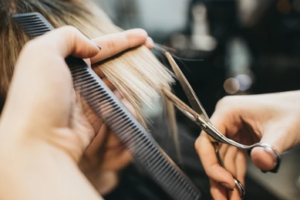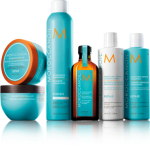As hair professionals, we often encounter questions about various hair types and conditions. Two terms that frequently cause confusion are “fine hair” and ” thin hair.” While they may seem similar, they are quite different. Let’s delve into what sets them apart and how to care for each type.
What is Fine Hair?
Definition: Fine hair refers to the diameter or thickness of individual hair strands. People with fine hair have strands that are smaller in diameter compared to medium or coarse hair.
Characteristics:
- Soft and Silky: Fine hair tends to be soft and smooth.
- Lightweight: Each strand is light, making it susceptible to fly-aways and static.
- Prone to Oiliness: Fine hair can get oily quickly as the natural oils from the scalp easily coat the thin strands.
- Volume Challenges: It may lack volume and appear flat.
Care Tips:
- Volumizing Products: Use shampoos, conditioners, and styling products designed to add volume.
- Lightweight Conditioners: opt for conditioners that won’t weigh your hair down.
- Regular Washing: Wash frequently to prevent oil buildup.
- Blow Dry Techniques: Blow dry upside down to add lift at the roots.
What is Thin Hair?
Definition: Thin hair is where hair density decreases over time, leading to noticeable hair loss and a reduction in overall volume.
Characteristics:
- Hair Loss: Noticeable shedding and reduction in hair density.
- Bald Patches: May develop in severe cases.
- Scalp Visibility: The scalp may become more visible due to decreased hair coverage.
- Fragile Hair: Hair can become brittle and break easily.
Causes:
- Genetics: A common factor in hair thinning.
- Hormonal Changes: Pregnancy, menopause, and other hormonal shifts can contribute.
- Health Conditions: Issues like thyroid problems or nutrient deficiencies.
- Stress: Physical or emotional stress can lead to hair loss.
Care Tips:
- Consult a Professional: Seek advice from a dermatologist or trichologist.
- Gentle Products: Use shampoos and conditioners that are gentle and designed for thinning hair.
- Healthy Diet: Ensure you are getting essential nutrients for hair health.
- Minimize Heat and Chemicals: Avoid excessive heat styling and chemical treatments.
Key Differences
- Nature of the Issue: Fine hair is a natural texture, while thin hair is a condition indicating hair loss.
- Appearance: Fine hair looks and feels thin but maintains a full head of hair, whereas thin hair involves a reduction in hair density and potential bald patches.
- Management: Fine hair benefits from volumizing techniques, whereas thinning hair requires treatments to address hair loss and promote regrowth.
Conclusion
Understanding the difference between fine-textured hair and thinning hair is crucial for proper hair care. At Salon Chic, we offer personalized consultations to help you identify your hair type and recommend the best products and treatments. Whether you have fine hair or are experiencing hair thinning, we’re here to help you achieve your hair goals with confidence.
Visit us at Salon Chic for a tailored hair care experience!



